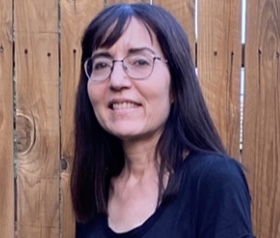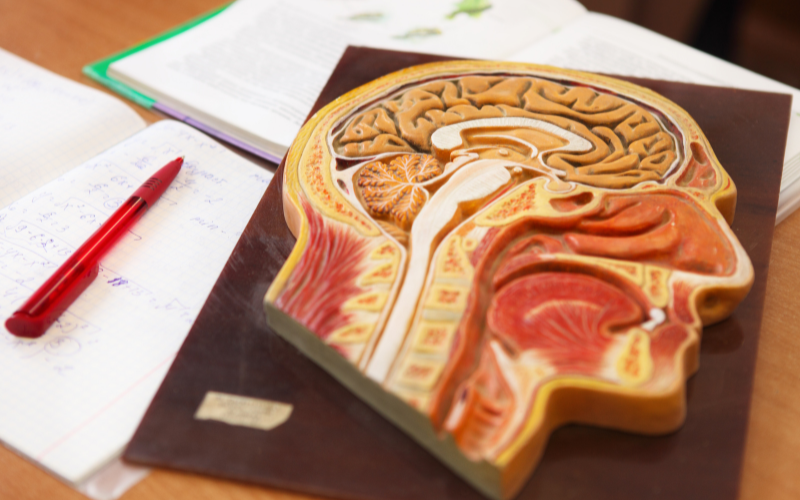EMDR Therapy and Biohacking
Guest Blog Post by Alison Acton, LMFT
On my journey as an EMDR Therapist in my work life and biohacker in my personal life, I am struck by the parallels that EMDR has with biohacking. I would go so far as to say that EMDR is akin to being a biohacking therapy. This can be of interest to EMDR therapists, EMDR therapy clients, and biohackers alike by sharing strategies to achieve similar goals with each discipline enhancing the other.
What is biohacking, and how does it intertwine with components of EMDR?
Let’s first look at definitions. Per Dave Asprey, who is considered the father of biohacking, biohacking is the art and science of changing the environment around you and inside you, so you have more control over your own biology (Asprey, 2014, 2023). This means actively doing things in your daily life to affect change in your body including your brain. This definition resonates deeply with me in regards to the parallel with EMDR therapy overall and specifically with Phase 2 (Preparation) of EMDR. Teaching clients to be able to do a mindfulness exercise such as the Safe/Calm Place successfully, which is a hallmark in the preparation phase of EMDR therapy, can give clients more control in changing their internal state and thus their biology. With the use of the Safe/Calm Place exercise, clients can achieve mastery over reducing anxiety and affecting change in their entire body. Clients often report feeling calmer, lighter, and better as they are able to engage in this exercise. In biohacking, results are reached by employing multiple strategies called bio hacks or shortcuts to change our environment around and inside us so that we have more control over our biology.
According to the late Dr. Francine Shapiro, founder of EMDR therapy, “with successful EMDR therapy the resolution of disturbance is achieved through the stimulation of the client’s inherent self-healing processes moving disturbing events from being stored in isolated neural networks in the brain to adaptive networks where learning can take place and the material can be resolved so it is no longer stuck in the alarm center of the brain,” (Shapiro, 2018). This allows the brain to heal and our brain biology to change. Dave Asprey wrote “a mind that can control its response to stress is the world’s most advanced anti-aging technology and if your fight or flight switch is switched on there is no doubt you will age more quickly” (Asprey, 2019). Taking this insight into consideration, it stands to reason that successful EMDR therapy can have antiaging effects as material is no longer stuck in the alarm system of the brain keeping our fight or flight switch activated.
Now let’s look at some presuppositions of both. EMDR therapy and biohacking both presuppose the following tenets:
- The body/brain’s innate ability to heal itself is valued
- Equanimity (biohacking) and emotional regulation/stability (EMDR) is valued and the ability to change the state in your body is emphasized (both)
- What is not needed as we get better using EMDR therapy or biohacking – is discarded (EMDR) and replaced with adaptive resolution or is cleared out through autophagy and eliminating senescent or “zombie” cells (cells that are no longer useful) to improve the immune system (biohacking)
The EMDR International Association’s definition of EMDR therapy states that the EMDR approach to psychotherapy intends to facilitate the client’s innate ability to heal and facilitate the effective reprocessing of traumatic events, adverse life experiences, and associated beliefs to an adaptive resolution. Dr. Shapiro introduced the Adaptive Information Processing (AIP) system, which posits that our brains have the capability to recover just like the body’s response to healing physical injuries. Dave Asprey writes that “your brain is wired to change rapidly, to optimize itself, and to grow and evolve more than any part of your body; better memory, greater mental speed, and more clarity are all within our reach” (Asprey 2023). Both approaches support the brain’s capacity for neuroplasticity , its ability to change throughout our lifetime.
Equanimity is the state in which you can remain in control of yourself and be completely composed no matter what is happening around you, to have mental calmness, composure, and evenness of temper even in difficult situations. I believe this is an excellent quality for an EMDR therapist to possess both personally and professionally, as trauma work is difficult. A deep sense of calmness despite adversities is a truly powerful life coping skill. Similarly, we want our clients to be able to have good emotional regulation skills and a sense of stability before trauma reprocessing, which will set them up for a better EMDR therapy experience.
With EMDR therapy, as we rewire the brain to a more adaptive resolution, what is no longer needed is discarded as the inadequately processed and maladaptively stored disturbances and old stuff are worked through. Dr. Shapiro explains this so well in her book Getting Past Your Past: Take Control of Your Life with Self Help Techniques from EMDR Therapy, an excellent accessible read for both clinicians and clients. In biohacking, one emphasis is to look at cleaning up cells that are no longer useful, called senescent or “zombie cells,” through a process called autophagy. Autophagy allows cells to clear out and recycle dysfunctional parts and regenerate healthy parts. Autophagy can be induced by different strategies and is thought to be a housekeeping of the body, which is believed to have multiple health benefits.
Goals of EMDR therapy and biohacking
Let’s look at the goals of EMDR therapy and biohacking. Some goals of biohacking include achieving equanimity, improving brain health, improving sleep, improving quality of life, and as a result of these components, achieving increased longevity. These goals align with goals of EMDR therapy as we want clients to be able to achieve calmness in their bodies, improved brain health (as EMDR is a brain-based approach), improved sleep if sleep was problematic, and improved quality of life as inadequately processed disturbing memories are reprocessed and adaptively stored in the brain.
In biohacking, goals are reached by employing multiple bio hacks to improve overall brain and body health, prevent disease pathways, and increase longevity. These hacks can include things such as intermittent fasting, use of supplements for brain health, and diet, exercise, and sleep strategies. If interested, these are things for the reader to explore and discuss with their physician. On my journey I have found that intermittent fasting (a bio hack) has reduced my resting heart rate during the day and given my body a feeling of overall calmness to an extent that I have never previously achieved; thus, changing my biology and allowing me to experience my own Safe/Calm place on a deeper level. This is just one example of how a biohacking strategy can enhance an EMDR therapy strategy.
In EMDR therapy, Dr. Shapiro reminds us that we are moving disturbing information at an accelerated rate further along the appropriate neurophysiological pathways until it is adaptively resolved. She also stipulates that the utility of EMDR therapy is found in its ability to afford relatively rapid change so that interventions can be quickly accessed and therapeutic corrections made (Shapiro, 2018). One of Dave Asprey’s latest books captures a key component of biohacking in its title Smarter not Harder: The Biohacker’s Guide to Getting the Body and the Mind You Want. As an EMDR therapist, I can attest to the therapist’s role in zeroing in on what’s important, achieving results much quicker than long term psychotherapy approaches, and seeing clients experience vast relief and healing. I find that most people do not want to be in therapy forever, and EMDR therapy is a game changer as it requires less time than traditional psychotherapy approaches with maximum results; thus, EMDR therapy is a smarter not harder approach.
I would suggest that clients who feel success from EMDR therapy consider adding biohacking strategies to their mental health protocol (in conjunction with advice from a medical partitioner) and for biohackers to consider adding EMDR therapy to their biohacking strategies to achieve greater quality of life, improved personal biology, and greater body and brain health. Working as an EMDR therapist is a true privilege in having a fast, effective shortcut or bio hack that creates profound relief and healing, altering brain biology to a more restorative state.

Alison M. Acton, LMFT, is an EMDR Certified Therapist and Consultant in a part time EMDR Therapy & Consultation private practice in Visalia, California and full time Clinical Supervisor at Tulare County Child Welfare Services (CWS). As a Clinical Supervisor Acton supervises a team of therapists at Child Welfare Services who utilize EMDR as one offered modality in the provision of clinical services. Acton is responsible for initiating, implementing, and supervising the use of EMDR within Tulare County Child Welfare Services since December of 2012 and provides an ongoing EMDR consultation group for Tulare County CWS, Behavioral Health, and local community providers.
References
Shapiro, F. (2018). Eye Movement Desensitization and Reprocessing Therapy: Basic Principles, Protocols, and Procedures (3rd ed.). The Guilford Press.
Shapiro, F. (2012). Getting Past Your Past Take Control of Your Life with Self-Help Techniques from EMDR Therapy. Rodale.
Asprey, D. (2023). Smarter Not Harder: The Biohacker’s Guide to Getting the Body And Mind You Want. Thorsons.
Asprey, D. (2019). Super Human: The Bulletproof Plan to Age Backward and Maybe Even Live Forever. Harper Wave.
Asprey, D. (2014). The Bulletproof Diet. Harper Collins.
Back to Focal Point Blog Homepage
Additional Resources
If you are a therapist interested in the EMDR training:
- Learn more about EMDR at the EMDRIA Library
- Learn more about EMDR Training
- Search for an EMDR Training Provider
- Check out our EMDR Training FAQ
If you are EMDR trained:
- Check out EMDRIA’s Let’s Talk EMDR Podcast
- Check out the EMDRIA blog, Focal Point
- Learn more about EMDRIA membership
- Search for Continuing Education opportunities
If you are an EMDRIA Member:
Date
May 2, 2025
Contributor(s)
Alison Acton





